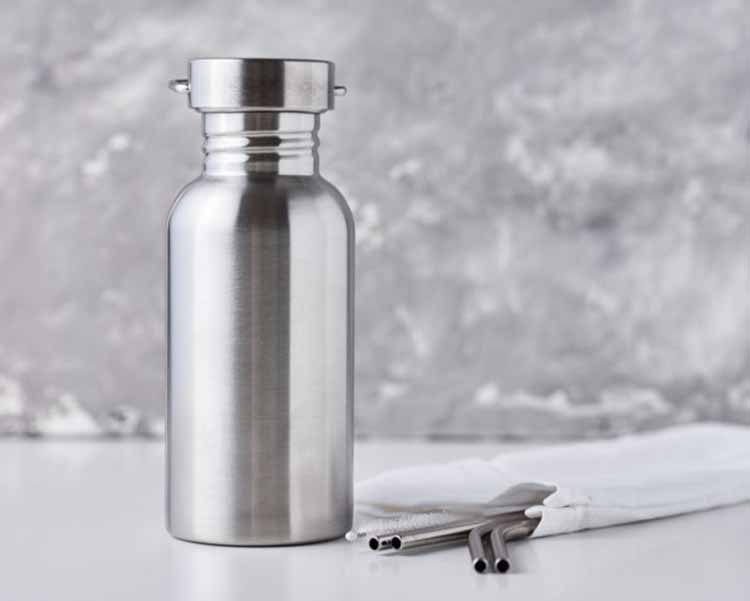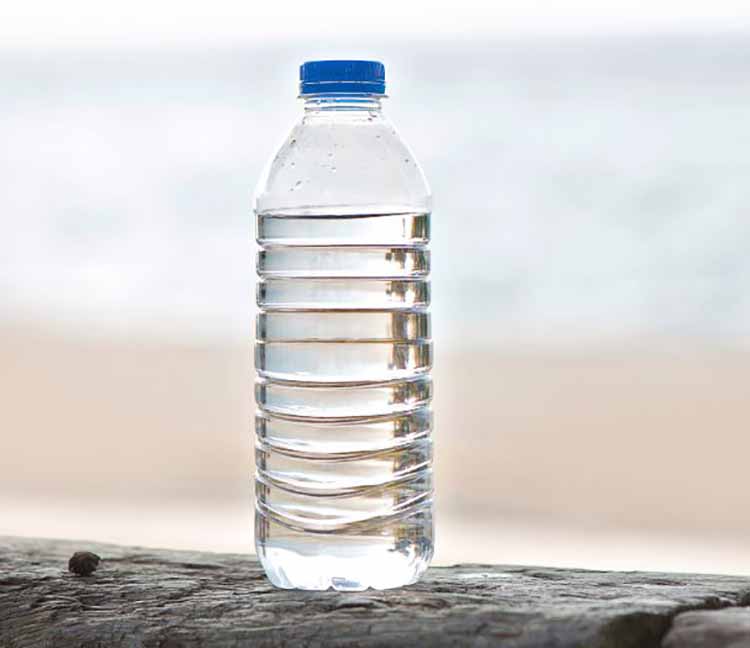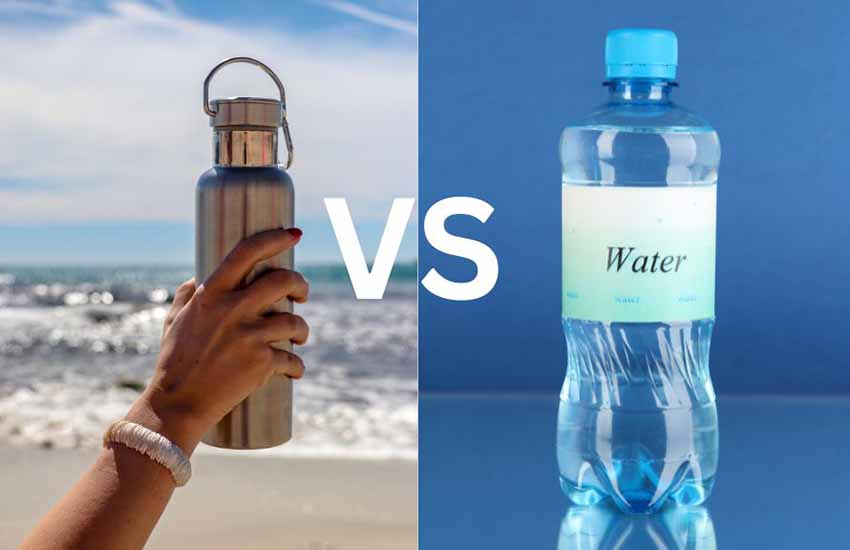If you are a fan of lightweight, easy-to-carry, affordable plastic water bottles, you should know the other side of the coin as well.
Have you heard of plastic bottles leaching chemicals into the water? Can you answer why thousands of people switch to stainless steel water bottles although they have a higher initial cost? If no, this ‘stainless steel vs plastic water bottles’ piece will let you know every necessary information, no worries!
In short, stainless steel bottles are durable, safe from chemical leaching, and keep drinks at the desired temperature for longer. Plastic bottles are lightweight and cheaper but can leach chemicals and need frequent replacement. For a long-term, eco-friendly choice, stainless steel bottles are superior.
This is not the whole story, though. Please continue reading for a detailed comparison and to know all the differences between stainless steel and plastic water bottles.

Stainless Steel vs Plastic Water Bottles- A Quick Comparison
Before we get into the detailed comparison and differences between stainless steel and plastic water bottles, let us walk you through a quick comparison between them.
| Factors | Stainless Steel | Plastic |
| Material | Made from metal alloys such as iron, chromium, and nickel | Made from synthetic materials like polyethylene or polypropylene |
| Health Considerations | Non-reactive, doesn’t leach chemicals, generally considered safe | Potential leaching of chemicals (BPA) with hot liquids |
| Temperature Control | Excellent insulation, keeps drinks hot or cold | Offers minimal to no insulation, drinks lose temperature quickly |
| Durability | Durable and scratch-resistant | Prone to scratches, cracks, and breakage |
| Environmental Impact | Reusable, reduces plastic waste | Contributes to plastic pollution |
| Cost | More on the expensive side | Affordable, readily available |
Key Differences Between Stainless Steel and Plastic Water Bottles
Once you have given a glance at the quick comparison between stainless steel and plastic water bottles, we are ready to spill more tea. Below are the key factors that make the materials different from each other.
Material Durability
Stainless Steel: Stainless steel water bottles are widely popular for their strength, durability, and resistance to corrosion. The material is made from metal alloys (e.g. iron, chromium, and nickel). These bottles can withstand drops, dents, and scratches much better than plastic.
Unless an 18-wheeler truck runs over stainless steel water bottles, dropping or knocking over them will result in just a minor scratch. The colors and designs on stainless steel bottles are applied to ensure they remain intact and do not peel off.
Plastic: Plastic water bottles are made from synthetic materials like polyethylene or polypropylene.
Plastic bottles are more prone to shattering or cracking when you drop them from a high altitude. They also warp if you pour hot liquid into them. Even if you are more careful and don’t drop them, plastic bottles degrade more quickly than steel ones.
Any colors or designs printed on the exterior of plastic water bottles will likely flake, chip, and peel off within a few months.
Winner: Stainless steel.
Health Considerations
Stainless Steel: Stainless steel is non-reactive, which means it doesn’t leach chemicals into the water. It will ensure that your drink remains safe and uncontaminated. Unlike plastic water bottles, stainless steel bottles do not pose any health risks. However, the lids may be a concern if not made from BPA-free plastic materials.
Plastic: Research found that plastic bottles, particularly those not labeled as BPA-free, can release significant amounts of BPA into the water. The amount of BPA released increases when the water inside the bottle is hot.
BPA (Bisphenol A) can interfere with hormone action and disrupt hormonal balance. It can cause belly fat, mood swings, and hormonal imbalances in the long run.
Other carcinogenic phthalates present in some plastic water bottles can disrupt the endocrine system and are linked to male fertility issues, diabetes, obesity, and attention deficit hyperactivity disorder.
Winner: Stainless steel. However, not all plastic water bottles are harmful; there are safer options, which we will talk about later.
Environmental Impact
Stainless Steel: Stainless steel bottles are highly recyclable and have a longer lifespan. They reduce their environmental footprint significantly compared to single-use options. Unlike plastic water bottles, steel bottles do not contribute to the devastating oceanic plastic pollution.
They are also far more durable and long-lasting than plastic bottles, which reduces overall plastic waste.
Growth Trends in the U.S. Reusable Water Bottle Market (2020-2030)

Source: https://www.grandviewresearch.com/
Plastic: The discarded plastic water bottles that end up in the ocean kill around 1.1 million marine animals each year. Here’s a study that provides a clear link between plastic debris ingestion and sea turtle mortality.
Although plastic water bottles are recyclable, the rate is too low, and plastic’s life cycle is also too short. They often end up in landfills, where they can take up to 700 years to start decomposing.
Winner: Stainless Steel.
Insulation Properties
Stainless Steel: Stainless steel shines when it comes to temperature control. Most of these bottles feature double-wall insulation which creates a vacuum between layers that minimizes heat transfer.
This keeps your cold drinks icy for hours and hot beverages steaming for extended periods.
There are also single-wall and triple-wall insulations which offer less and more insulation (respectively) than double-wall insulation.
Plastic: Plastic water bottles have poor temperature retention. A cold or frozen drink in a plastic bottle will warm up quickly. These bottles build condensation which results in a mess in cup holders, bags, or on desks.
Winner: Stainless steel, again!
Weight
Stainless Steel: Stainless steel is heavier than plastic due to the density of the material. This added weight can be a drawback for some users, especially when the bottle is full.
Stainless steel bottles are durable and stable because of their increased weight. They are less likely to tip over and can withstand multiple drops without significant damage.
Plastic: Plastic water bottles are known for their lightweight. This is the key reason why some users make plastic water bottles their first choice; yes, the bottles are incredibly easy to carry around.
People often prioratize plastic water bottles over steel ones for activities like hiking, running, or commuting. Their low weight also makes them suitable for children to use without strain.
However, the lightweight nature of plastic is the reason why plastic bottles are more likely to tip over or get damaged when dropped.
Winner: Plastic.
Cost
Stainless steel: These bottles have a higher initial cost than plastic bottles. This is because more expensive materials and production processes are involved in stainless steel water bottles.
However, these bottles are a cost-effective investment over time. They are highly durable, last for many years, and usually come with a lifetime warranty. Therefore, despite the higher upfront cost, their durability means you won’t need to replace them frequently.
Plastic: Plastic water bottles are generally the most affordable option on the market. Since they have low production costs, it makes them accessible to a wide range of consumers.
However, due to their shorter lifespan and the need for frequent replacements, the long-term costs will result in long-term expenses. Each time a plastic bottle breaks or wears out, you’ll need to purchase a new one, which adds up over time.
Winner: Plastic bottles are cheaper initially; stainless steel bottles offer better long-term value. Therefore, we’d like to crown stainless steel.

Which Plastic Water Bottles Are Safe to Drink From?
Are all plastic water bottles harmful to health? Is there no way to drink from a plastic water bottle and stay healthy?
Well, not all plastic water bottles are harmful to health. Certain plastic materials are designed to be safe and free from chemicals that can leach into the water. The safest types of plastic (approved by FDA) for water bottles are here:
- PET (Polyethylene Terephthalate): This is the most common plastic used for water bottles (marked with number #1). It’s considered safe for single use and is BPA-free.
- High-Density Polyethylene (HDPE): HDPE is known for its strength and resistance to impact. It’s commonly used for milk jugs and detergent bottles. It does not leach chemicals into the water.
- Low-Density Polyethylene (LDPE): LDPE is often used for squeeze bottles. It is flexible and safe for drinking purposes, as it doesn’t release harmful chemicals.
- Polypropylene (PP): This plastic is widely used for food containers and is known for its resistance to heat. PP does not leach chemicals, which makes it safe for water bottles. This plastic is marked with the number #5.
- Tritan (Copolyester): This BPA-free plastic is becoming increasingly popular for reusable water bottles. It’s lightweight, shatter-resistant, and known for not leaching chemicals.
Note: Plastics with codes #3 (PVC) and #7 (BPA) are not recommended for water bottles. They may contain chemicals that can leach into drinks, especially with heat. So, make sure you are aware of them while buying a plastic water bottle.
FAQs
Do Stainless Steel Water Bottles Keep Drinks Hot?
Yes, stainless steel water bottles keep drinks hot. They use double-wall vacuum insulation to maintain temperature. This design keeps hot drinks warm for up to 12 hours. The insulation works like magic to prevent heat loss, making it ideal for coffee or tea.
Can You Boil Stainless Steel Water Bottle?
Yes, this is stainless steel’s hidden advantage. You can boil a stainless steel water bottle as it can handle high temperatures without damage. If you want to sterilize it, fill the bottle with water and place it in a pot of boiling water for a few minutes. This method effectively kills bacteria and cleans the bottle.
What Is The Temperature Limit for Stainless Steel?
Grade 330 stainless steel, can withstand temperatures up to 2,000 degrees Fahrenheit. However, for optimal durability, try to make your bottle exposed to over 1,900 degrees Fahrenheit. This precaution ensures the material maintains its strength and extends its lifespan.
Final Words
And, we’re done discussing stainless steel vs plastic water bottles. The summary is, that stainless steel water bottles offer superior durability, temperature retention, safety, eco-friendliness, and cost-effectiveness in the long run.
Although plastic water bottles are lightweight and affordable, they require frequent replacements. Moreover, they can pose health risks unless you get an FDA-approved, safe-to-drink-from plastic water bottle.
Now, the choice is yours!

